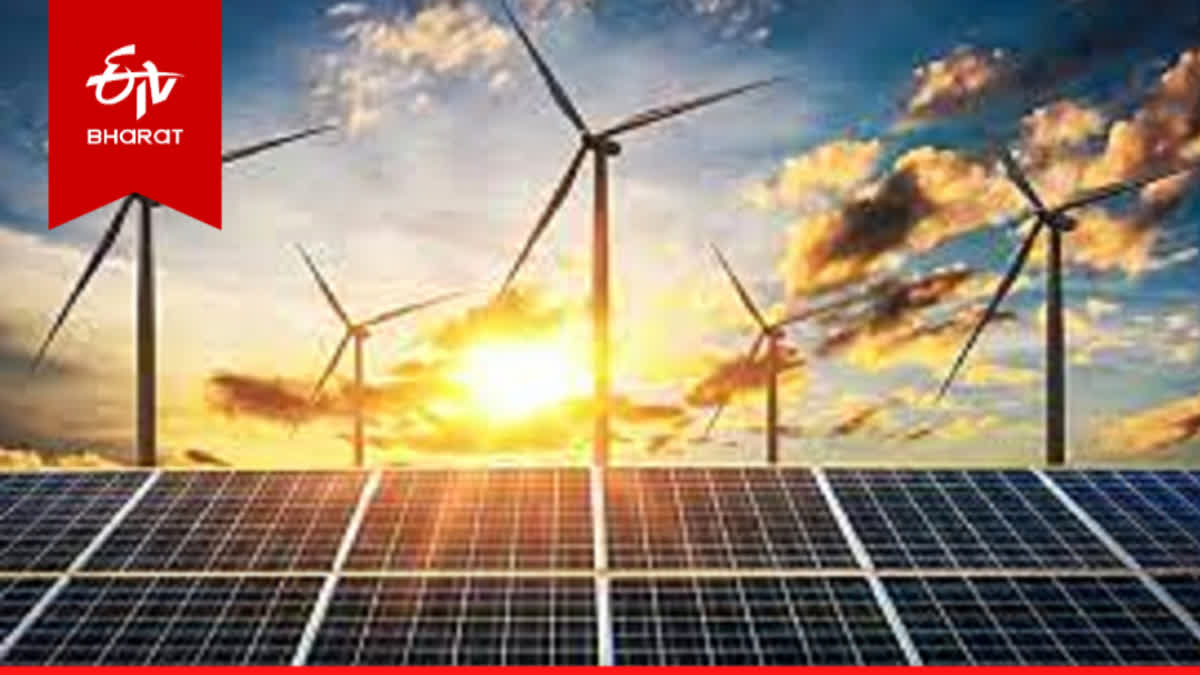Dehradun (Uttarakhand): Devbhoomi Uttarakhand and other hilly states are confined to limited resources due to their odd geographical conditions. Nature has blessed other hilly states, including Uttarakhand with many priceless gifts. Geothermal energy is one of them. Wadia Institute is emphasizing making hybrid energy by mixing wind and solar energy, along with geothermal energy. If hybrid energy is used properly in the Himalayan states, then the problem of electricity can be solved by it.
With the onset of summer, the power crisis deepens in all the states of the country. Hence, many states have to buy electricity from other states at a higher price. In such a scenario, scientists are engaged in the exercise of inventing new technology from time to time to overcome the power crisis. Therefore, efforts were made to generate energy by using the natural resources of the Himalayan states. Regarding this, the Wadia Institute started the initiative in Uttarakhand as well, but due to the disaster at Raini village in Uttarakhand in 2021, this project could not be taken forward.
Actually, Tapt Kunds, the source of hot water, present in the Himalayan region, has always been the centre of attraction for the people. Many from far-off places reach the Himalayan region to see the Tapt Kund. Not only this, the Tapt Kund has not been put to any special use so far.
Also read: World's largest renewable energy park in Gujarat
Although, in many places, Tapt Kunds are used by devotees for taking a bath, but according to Wadia's research, electricity can also be generated from Tapt Kunds. Actually, after many years of hard work, the scientists of Wadia Institute have achieved success in the research of generating electricity from geothermal springs.
According to scientists, electricity can be generated by installing a binary power plant on a geothermal spring. Scientists are insisting on making hybrid energy by mixing wind and solar energy from the geothermal spring itself. A sufficient amount of energy can be generated from this hybrid energy. Along with this, electricity will be available in a constant form according to the weather and conditions. Even if electricity is not available from solar energy due to bad weather, electricity will continue to be produced from geothermal springs and wind energy. If all three energies produce electricity together, then a lot of electricity will be generated.
Also read: 2.3 billion people globally use polluting fuel to cook; 675 million have no electricity
According to scientists, a large number of hot springs are present in the Himalayan region. So far only the sources of about 340 hot springs have been identified. About 40 hot springs present in Uttarakhand are included. Out of 40 geothermal springs present in Uttarakhand, 20 are present in the Garhwal region and 20 in the Kumaon region. Not only this, Wadia's scientist Sameer Tiwari did research on Tapt Kund present in Tapovan of Joshimath a few years ago. However, it was revealed from that study that about 5 MW of electricity can be generated from geothermal springs located in Tapovan.
Kalachandra Sain, Director of the Wadia Institute of Himalayan Geology, said that information about 40 geothermal springs was received through geoscientific investigation in Uttarakhand. The study showed that electricity can be generated from all these geothermal springs. So much electricity cannot be generated that the shortage of electricity can be met. By adding some more energy to it, a considerable amount of electricity can be produced through hybrid energy.
Also read: Women participation must in steering India's energy transition to net zero: Union power minister
He said that solar and wind energies are available all the time in Uttarakhand. In such a situation, energy can be produced from solar and wind. Therefore, wherever there are geothermal springs in the state, energy can be produced through hybrid energy involving solar and wind. For this, if we develop technology regarding this energy, then we will be able to produce a lot of electricity. It will not only generate a lot of electricity, but also provide employment to the local people.
On the other hand, Geologist SP Sati said that the geothermal energy present in the state is still untapped. Along with this, wind energy has also not been used yet, while many countries are using wind energy. The work on solar energy is definitely going at a fast pace, but in the future, non-conventional energy will have to go. Against that backdrop, geothermal energy, wind energy and solar energy should be used as hybrid energy. This hybrid energy has great potential in mountainous areas.



